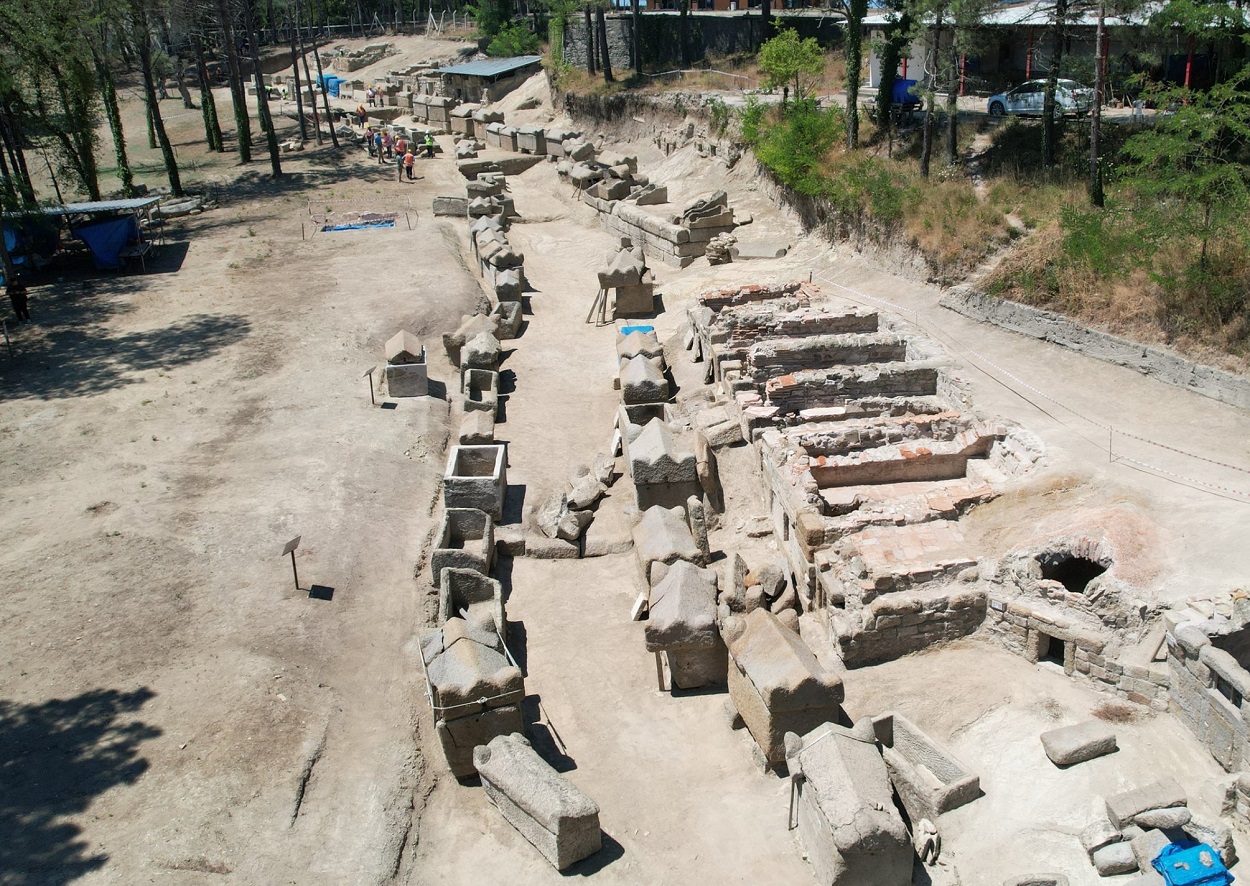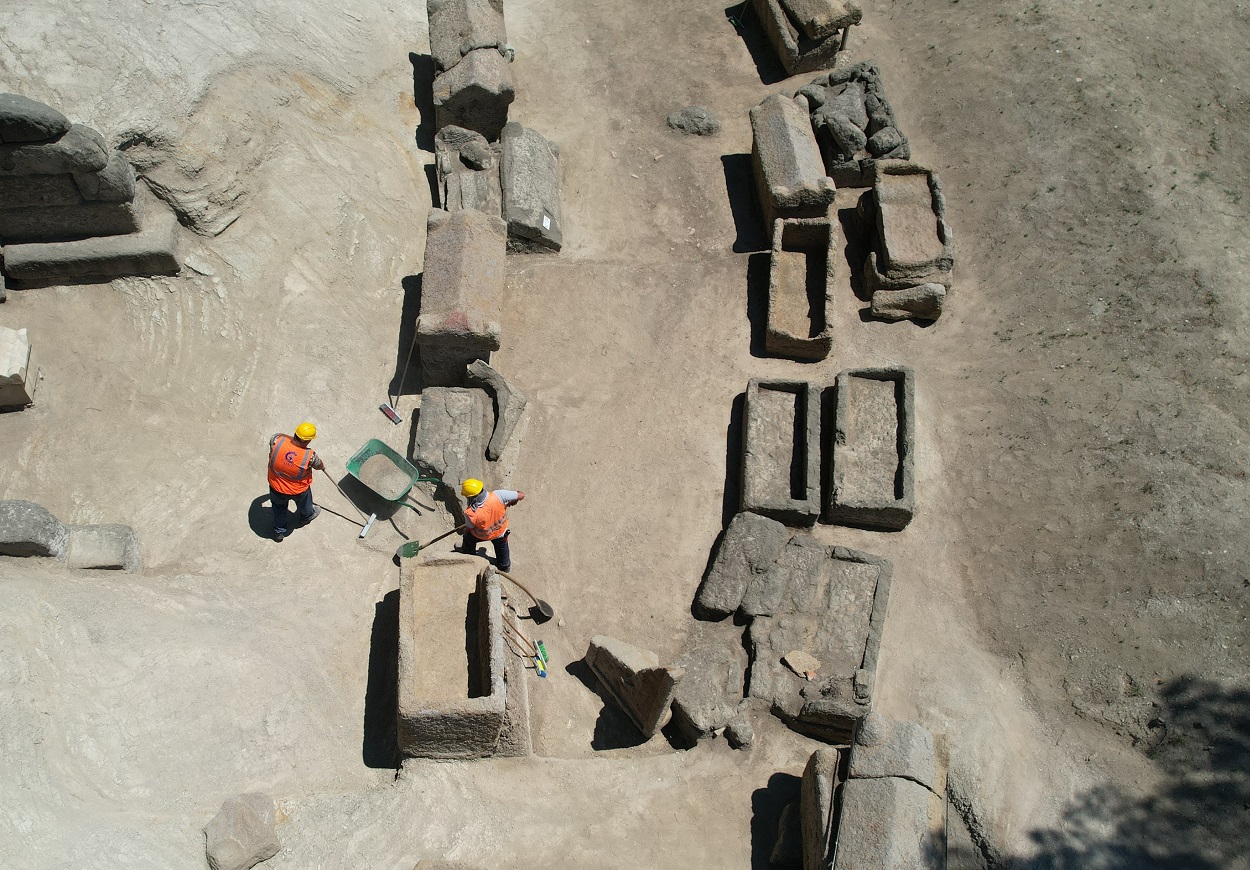Archaeologists excavating the ancient city of Tios have uncovered a Roman necropolis featuring an avenue lined with sarcophagi.
Tios is an Ancient Greek colony, located on the south-western coast of the Black Sea near the modern Filyos Port in Zonguldak, Turkey.
Legend has it that the city was founded in the 7th century BC by a Milesian priest named Tios in the land of the Caucones, a Paphlagonian tribe.
Unlike many other Greek colonies along the Black Sea coast, Tios has remained relatively well-preserved in situ, with the archaeological record largely undisturbed by modern development.
Recent excavations, led by Professor Şahin Yıldırım from Bartın University, have uncovered a large necropolis on the eastern side of the city. Archaeologists have so far unearthed 96 sarcophagi, 23 chamber burials, 7 cist graves, 60 frame tile graves, and over 1300 funerary objects.

According to Professor Yıldırım, the necropolis covers a vast area and has burials dating from the 5th century BC to the 5th century AD, a period of burial activity that lasted a millennia.
The necropolis was most active around the 1st to 3rd centuries AD during the Roman period, emerging into a “city of the dead”. “We can see that the necropolis was constructed with a plan consisting of streets, alleys and terraces, just like a city,” said Professor Yıldırım.
Excavations have also revealed an avenue measuring approximately 500 metres, in which sarcophagi have been deliberately placed on its left and right flanks. The archaeologists suggest that these burials belonged to wealthy individuals, predominately from the 2nd to 3rd centuries AD.
“To date, no such necropolis examples of this scale have been encountered in any ancient city in the Black Sea region. This area holds a very important place for Türkiye and Black Sea archaeology,” added Professor Yıldırım.
Header Image Credit : AA
Sources : DailySabah





